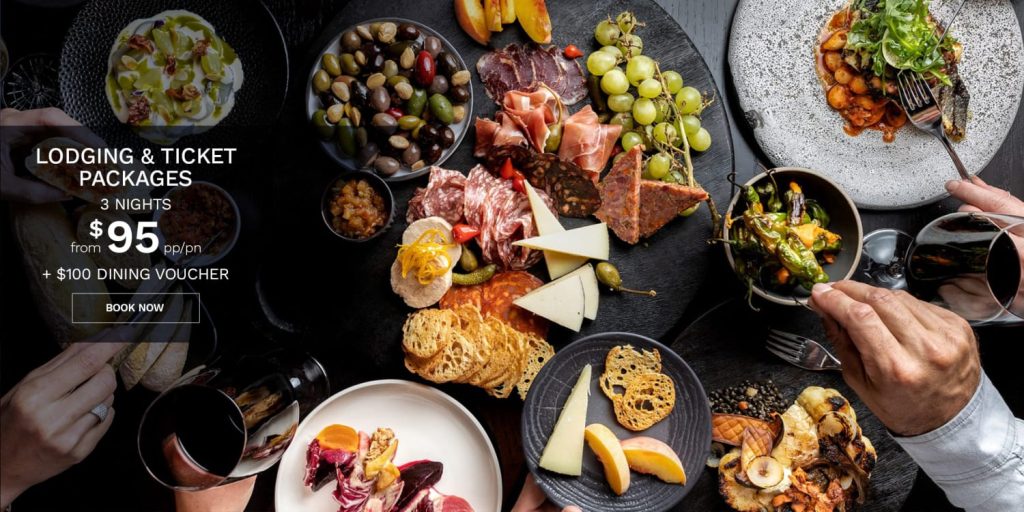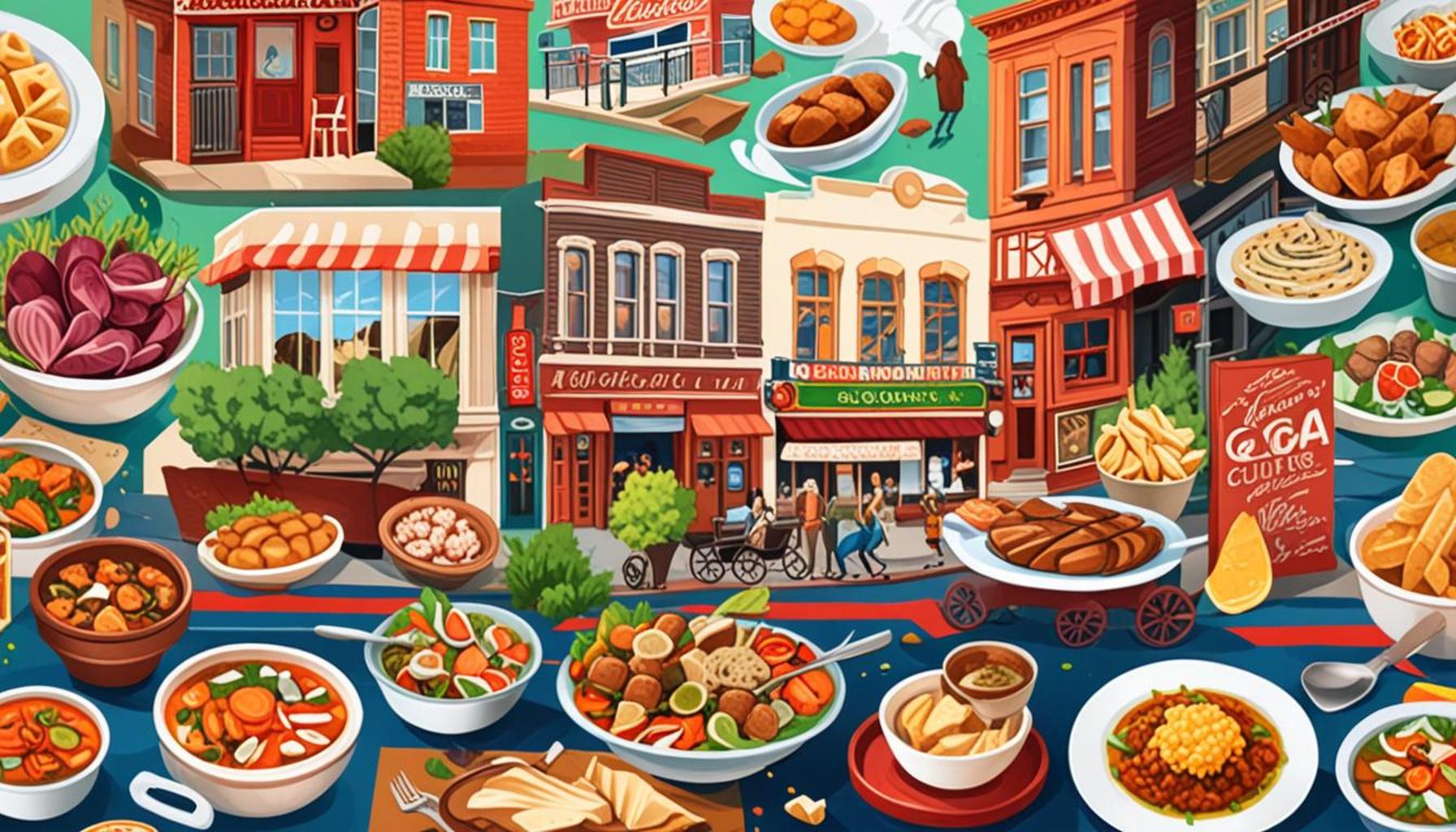Exploring Local Gastronomy: Cultural Itineraries through Food in the USA

Uncovering America’s Culinary Heritage
The United States is a diverse mosaic of cultures, and one of the most vibrant threads in this fabric is its local gastronomy. Food in America transcends mere nourishment; it embodies a rich tapestry of history, community, and identity that reflects the unique characteristics of each region. From the bustling city streets of New York to the rustic charm of small-town diners in the Midwest, every essential bite unveils a story waiting to be explored.
Embarking on a journey through the vast culinary landscape of the U.S. reveals various traditions molded by the local environment and cultural interactions. Each region possesses its own distinct culinary voice, rich with local ingredients and techniques that epitomize its heritage. Here’s a deeper look at some of these fascinating influences:
- Regional Ingredients: Consider the fresh seafood of New England, which boasts delicacies like clam chowder and lobster rolls, or the bold, spicy flavors of Southern cooking that give life to dishes such as jambalaya and fried chicken. In contrast, California’s agricultural abundance contributes to a thriving farm-to-table movement, where dishes are crafted using the freshest, seasonal produce, showcasing the state’s commitment to sustainable eating.
- Local Festivals: Festivals celebrating food culture provide an immersive experience into regional specialties. Events like the Great American Beer Festival in Denver attract beer enthusiasts to sample brews from across the country, while barbecue festivals in Texas and Kansas showcase the meticulous art of smoking meats, drawing crowds eager to savor tender brisket or tangy ribs that embody regional pride.
- Diverse Influences: America’s culinary landscape is layered with flavors introduced by immigration over centuries. From the vibrant Mexican street food found in California’s taco trucks to the Italian pasta dishes rooted in New York’s Little Italy, the melting pot of cultures results in a gastronomic experience like no other.
Each dish carries a narrative that is often deeply rooted in the heritage of its community. For instance, Chicago’s deep-dish pizza stands as a symbol of the city’s grit and determination, with its thick crust and hearty toppings echoing the urban life of the Windy City. Similarly, New Orleans gumbo reflects the rich tapestry of Creole and Cajun cultures, combining okra, sausage, and an array of spices in a flavorful stew that tells of the city’s historical influences and diverse population.
As you explore these cultural itineraries through food, you not only elevate your sense of taste but also weave a profound connection with the local stories and traditions that each dish represents. From the comforting embrace of Southern biscuits to the sweet indulgence of Maine’s whoopie pies, the journey through American cuisine is not just about eating; it is about celebrating the spirit of the land and its people. Join us as we delve deeper into the diverse landscapes of American cuisine, unraveling the rich stories contained within each flavor, inviting everyone to discover something new at the table.
DIVE DEEPER: Click here to savor the journey

Regional Flavors: A Culinary Map of America
To truly explore local gastronomy in the United States, one must embark on a journey that spans its vast geographical and cultural landscapes. Each corner of the nation offers a unique palette of flavors shaped by various influences, from indigenous ingredients to immigrant traditions. What emerges is a culinary map navigating regional diversity, an atlas of food experiences that tell the stories of people and places.
In the northeastern states, the culinary experiences are often defined by the ocean and the harvest of the land. In Maine, for instance, one cannot visit without indulging in the quintessential lobster roll. The contrasts of sweet lobster meat and savory butter pay homage to the state’s rich maritime history. Meanwhile, Massachusetts’ clam chowder combines coastal seafood with a creamy base, reflecting local resourcefulness stemming from New England’s fishing legacy.
The journey moves southward, where the heartwarming flavors of Southern cuisine unfold. States like Louisiana and Texas boast a culinary landscape that embraces bold spices and rich traditions. Louisiana’s famous gumbo and jambalaya showcase a combination of Creole and Cajun influences, fusing ingredients like sausage, rice, and seafood into a dish packed with history. Texas, known for its barbecue, presents a different take on slow-cooked meat, with smoked brisket, sausage, and ribs served with tangy sauces that ensure a tantalizing eating experience.
- Midwestern Comfort: The Midwest prides itself on comfort food that warms the soul. Dishes such as deep-dish pizza in Chicago or a classic beef stew capture the essence of heartland hospitality. These meals convey a sense of community and shared heritage, with recipes often passed down through generations.
- Western Innovations: As we move further west, local gastronomy continues to evolve. California champions a fresh, health-conscious approach to cuisine, with an emphasis on the farm-to-table movement. Here, you’ll find dishes that highlight seasonal produce, organic grains, and unique flavor combinations, exemplifying the state’s progressive culinary ethos.
- Pacific Inspirations: In the Pacific Northwest, the pristine natural environment yields a bounty of ingredients that inspire iconic dishes. Salmon, for instance, defines the region, often grilled or cured and paired with local herbs such as dill and wild fennel, celebrating the rich maritime culture of the area.
As we traverse this diverse landscape, it’s evident that food is more than just sustenance; it serves as a cultural marker and a medium of storytelling. The cultural itineraries we uncover through food evoke a sense of nostalgia, connection, and curiosity. Whether you savor a slice of pizza in New York City, feast on gumbo in New Orleans, or dive into a plate of fried chicken in Nashville, every meal is a delicious portal into the history and identity of its region. This idea sets the stage for our exploration of the vast options available, all of which invite curious eaters to dig deeper into the stories they tell.
| Advantage | Description |
|---|---|
| Culinary Education | Exploring diverse culinary traditions enriches knowledge about American history and multicultural influences. |
| Community Engagement | Participating in local food events fosters community connections and supports small businesses. |
| Unique Experiences | Food tours offer exclusive access to local ingredients and cooking techniques often unseen by visitors. |
| Cultural Preservation | Journeying through local cuisines helps to preserve culinary heritage and promote sustainable practices. |
Exploring local gastronomy through cultural itineraries across the USA not only expands one’s palate but also enhances the understanding of the socio-cultural backdrop of various regions. Travelers are encouraged to dive into local food histories that unveil tales of immigration, adaptation, and resilience woven into the fabric of American society. Engaging with chefs and artisans provides insight into their unique stories and traditions, forging a deeper connection to the place visited.Participating in these itineraries often leads to unexpected discoveries, from hidden eateries to farmers’ markets overflowing with fresh produce and artisanal goods. Each bite tells a tale of its origin, and being part of such a culinary journey allows exploration beyond mere taste; it encompasses a rich tapestry of community, culture, and identity inherent to each locale.
DISCOVER MORE: Click here for an adventurous itinerary
The Savory Tapestry of Multicultural Influences
As we navigate deeper into America’s culinary landscape, the intricate influence of diverse cultures becomes increasingly apparent. The melting pot nature of society not only shapes the local gastronomy, but also fosters a unique blend of flavors and techniques that intertwine to create truly distinctive dishes.
In cities like New York, food is a reflection of its inhabitants. The ubiquitous food truck scene showcases offerings from around the globe. A walk through the streets of this bustling metropolis can lead you to a delightful taco stand serving carne asada alongside a cart specializing in gyros. The symbiotic relationship of these food offerings not only satisfies diverse palates but also encourages culinary adventure, as visitors and locals alike can explore the rich cultural narratives that each dish embodies.
- Mexican Influence in the Southwest: In states like Arizona and New Mexico, the spicy warmth of Mexican cuisine intermingles with Native American traditions. Dishes like enchiladas and tamales reflect a historical lineage, marrying local ingredients such as blue corn and chiles, illustrating how culinary practices evolve through cultural exchange.
- Italian Roots: The Italian-American experience has firmly established its place in American food culture, particularly in the Northeast. The beloved pizza in New York and the ever-popular spaghetti and meatballs symbolize the melding of Old World techniques with new-world ingredients. The story continues with the emergence of regional variations—Chicago’s deep-dish pizza, for example, diverges into a satisfying casserole-like dish topped generously with cheese and regional produce.
- Asian Flavors: The influence of Asian cuisine is significant across the United States, from California sushi rolls to authentic Vietnamese pho. In cities like Los Angeles, the culinary innovation of Asian fusion means dishes like kimchi tacos are common fare. Restaurants relentlessly explore and redefine these traditional recipes, keeping them fresh and exciting for a modern audience.
As we traverse these gastronomic horizons, it’s vital to recognize the role of local farms and producers in shaping the meals we enjoy. The farm-to-table movement not only focuses on the proximity of ingredients but also enhances our understanding of the food’s origin. In places like Portland, Oregon, farmers’ markets showcase an array of local produce that inspire chefs to create seasonal menus, affirming the connection between the land and the kitchen. This evolving dialogue between producers and chefs further enriches the culinary experience, turning each meal into a celebration of local pride.
Moreover, food festivals across the United States serve as vibrant occasions to immerse oneself in local gastronomic traditions. Celebrations like the New Orleans Jazz & Heritage Festival or the Charleston Food & Wine Festival spotlight regional dishes, allowing participants to taste a variety of cultural offerings while appreciating the history and artistry behind them. These events become communal experiences where food lovers can bond over shared flavors and narratives, ultimately gaining a deeper understanding of the cultural significance of the cuisine.
In this exploration of local gastronomy, we discover that each bite carries the essence of history, resilience, and innovation. As food connects us to our heritage and the earth, the culinary itineraries across the United States invite curious eaters to savor the stories woven into every dish, encouraging an appreciation of the country’s rich tapestry of flavors and cultures.
DON’T MISS OUT: Click here to enhance your travel plans
Embracing Culinary Journeys Across America
In conclusion, the exploration of local gastronomy in the United States reveals a rich tapestry of flavors, histories, and narratives that connect us all. As we embark on culinary itineraries, we uncover the ways in which regional specialties mirror the diverse cultural influences that have shaped American society. From the spirited spices of the Southwest to the vibrant food scenes of metropolitan hubs like New York and Los Angeles, each meal tells a story of migration, adaptation, and creativity.
Moreover, by engaging with local farmers and embracing the farm-to-table movement, eaters can savor the authenticity of seasonal ingredients while supporting sustainable practices. Festivals and food markets provide platforms for gastronomic enthusiasts to immerse themselves in the stories behind the dishes we love, reinforcing the importance of community bonds and shared histories.
As you navigate your own culinary adventures across the country, let curiosity guide your palate. Seek out hidden gems that celebrate local traditions and contribute to the ongoing evolution of American cuisine. By doing so, you not only enjoy a delectable experience but also participate in a larger narrative that honors the cultural diversity and innovation at the heart of gastronomy in the USA.
Ultimately, the journey through local foods encourages us to appreciate the unique intersections of history and flavor that are present in every corner of this great nation. Get ready to explore, savor, and celebrate the diverse tapestry that is American gastronomy.


